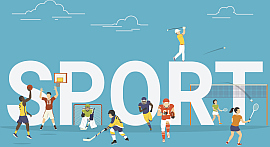Art Therapy
Overview
This isn’t therapy for artists, though given the lives of so many of them, they may need it more than anyone else. But trust us, or at least the psychologists, when they say that art can heal. No, it didn’t do much for Van Gogh (or his ear), but it can work wonders for others dangling on the precipice.
It’s a stressful world out there, and while a little Prozac and a comfortable leather couch may help a lot, sometimes they're just not enough. Consider Art Therapy, then, to be the meeting of Freud and Picasso, or the couch and the paintbrush.
Art Therapy is a combination of the analytical and the creative. As an Art Therapy major you’ll learn all the tools of the trade that come with being a therapist of those with mental, emotional, and developmental disorders. You’ll get to tap into that creative vein of yours as you help your patients learn to communicate their thoughts and feelings through the stories they draw and paint. After all, the mind expresses itself in many ways, not just through words. Sometimes it takes a blank canvas, a paintbrush, and a therapist to figure that out.
- 980 Avg SAT
- 987 Enrolled
- 788 Enrolled
- $46,430 Tuition
- 1180 Avg SAT
- 1,831 Enrolled
- $42,744 Tuition
- 1040 Avg SAT
- 1,609 Enrolled
View All Art Therapy Schools
SAMPLE CURRICULUM
Abnormal Psychology
Art History
Assessment in Art Therapy
Child Development
Clinical Applications in Art Therapy
Counseling
Foundations in Studio Art
Imagery and Metaphor
Painting and Drawing
Principles of Psychology
Psychology of Personality
Quantitative Reasoning
Theory of Art Therapy
HIGH SCHOOl PREPARATION
GRADUATE PROGRAMS & CAREERS
Explore Colleges For You
Connect with our featured colleges to find schools that both match your interests and are looking for students like you.
Top Schools for Game Design
Ready to create the next great app? Launch your gaming career at one of these top 50 programs.
Best 390 Colleges
168,000 students rate everything from their professors to their campus social scene.
Get Started on Athletic Scholarships & Recruiting!
Join athletes who were discovered, recruited & often received scholarships after connecting with NCSA's 42,000 strong network of coaches.



